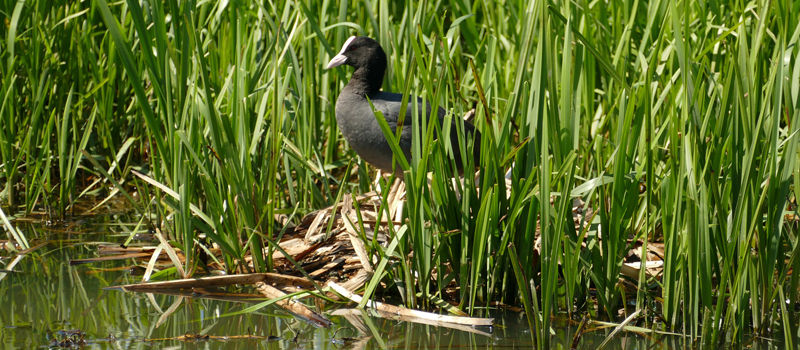WALNUT CREEK, Calif. — The County of Maui (the County) and Brown and Caldwell today announced the Lanai Wastewater Reclamation Facility Liner Replacement Project has received the 2019 Project of the Year award from the Hawaii Society of Professional Engineers, Maui Chapter.
The sole municipal wastewater treatment facility on the island of Lanai, the Lanai Wastewater Reclamation Facility (WWRF) uses a lagoon treatment system to service Lanai City. Following a liner failure discovered in Lagoon 1 in 2014, the 3.1-acre lagoon was drained for investigation. Draining the lagoon subsequently exposed sludge, impacting the local population of endangered Hawaiian stilt and coot bird species.
To preserve the endangered species and ensure Lanai City maintained a reliable wastewater system, the County collaborated with the U.S. Fish & Wildlife Service and hired an engineering and construction team (the team) of Brown and Caldwell and Kiewit Infrastructure West Co. for the Lanai Wastewater Reclamation Facility Liner Replacement Project.
The award-winning project involved the design and installation of 20,000-square-yards of ultraviolet-resistant, high-density polyethylene geomembrane laid over a geotextile cushion to replace the chlorosulphonated polyethylene liner in Lagoon 1. With Lagoon 1 out of service during liner renewal, Lagoon 2 served as WWRF’s primary treatment lagoon.
Replacing the liner reinstated flow to Lagoon 1, bringing the WWRF back to optimal operating configuration. With two functioning treatment lagoons, the County can generate a higher quality of wastewater, providing an effective system for the citizens and businesses of Lanai City.
“The team’s collaboration, creative thinking, and compassion for the local habitat prevented negative impacts to the treasured birds while also ensuring uninterrupted wastewater operations.”
Ray Matasci, Pacific area leader and senior vice president, Brown and Caldwell
Installation of the new Lanai WWRF liner was completed in February 2018, eight months ahead of schedule using an expedited five-month plan to avoid disturbing the stilt nesting season.
